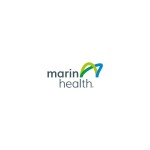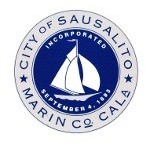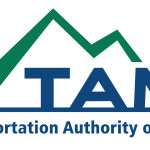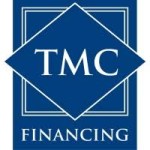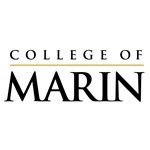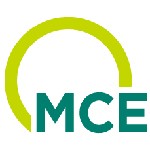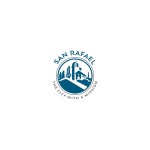‘Uncertainty’ flourishes among North Bay business as June 15 California reopening nears
June 15 may be the date the Gov. Gavin Newsom has said many coronavirus-related restrictions on the state economy would be loosened, but how businesses must deal with customers and workers as the pandemic fades is still a mystery, one with conflicting federal, state and county policies, as well as stringent requirements and recommendations.
Phase 2 of California’s reopening plan, called Beyond the Blueprint for a Safer Economy, brings new rules designed to relax restrictive policies as counties move away from the four-color tier system in place since late August. On this date, capacity and distancing restrictions will be lifted for most businesses and activities. Large-scale indoor events will have vaccination or negative test requirements for attendees through at least Oct. 1, and there is industry guidance designed to help businesses reduce risk.
This phase comes with industry-specific guidelines that must be followed. Businesses also must prepare site-specific protection plans and conduct a risk assessment for each business practice, using approved business-specific protocols as a guide for performing the assessment.
“Businesses don’t like uncertainty. Today, there is more uncertainty than clarity.” —Mike Blakeley, CEO, Marin Economic Forum
On top of the state guidelines, U.S. Equal Employment Opportunity Commission recently said businesses can require vaccines for only employees coming back to the worksite, but not those working out of the office, as reported in the New York Times. At the same time, the Times said opposing views may come from state laws.
However, the Times reported observed clarifications are still needed for things like making accommodations in compliance with the Americans with Disabilities Act for workers who cannot receive the vaccine for medical or religious reasons — and also because access to vaccine is not equitably distributed.
According to the New York Post, the EEOC said employers can offer workers incentives to be vaccinated, but they cannot be so substantial as to be coercive, under provisions of the Health Insurance Portability and Accountability Act. Examples of incentives may include offering a 30% discount of the total medical plan coverage cost, paid time off to get vaccinated or extra time off if vaccinated.
Employers also must provide reasonable accommodations for employees who refuse the shots due to a disability or pregnancy — which could mean a requirement for unvaccinated employees to wear masks or to work remotely.
MarketWatch reported that workers across the U.S. have gone to court to block inoculation requirements by employers, and many of these claims refer to a federal statute stating vaccines issued on an emergency basis can only be given voluntarily.
Here are a few of the unanswered questions being asked by local business leaders:
- Will different rules apply for vaccinated versus unvaccinated workers at the job site, and/or for on-site versus employees working from home?
- Will such bifurcated policies create two classes of workers posing a potential threat of unequal job discrimination?
- How many COVID-19 business tracking and reporting mandates will there be in phase 2?
- Will unvaccinated workers be separated from those vaccinated in the workplace (different break rooms, restrooms and office areas, etc.) and have to continue to wear masks and stay 6 feet apart?
- Will waivers be granted for businesses to protect them against disparity lawsuits?
Despite the unprecedented rollout of multiple COVID-19 vaccines, a survey by the Policy Institute of California in April showed that only 4 in 10 adults in the state said they already had the vaccine, 26% said they would get it as soon as it is available, 15% said they would get it in a few weeks, 6% in a few months and 9% after it is available. Some 7% said they would wait a year or more after it is available and 12% would not get the vaccine. Some people still needed convincing.
As of June 6, 53.1% of California’s population has been vaccinated against COVID-19, 12.0% have been partially vaccinated. In the North Bay counties, the proportions of the vaccinated are much higher.https://datawrapper.dwcdn.net/mYgNF/9/
A survey by Arizona State University in April found that 88% of employers said they planned to encourage their workers to get vaccinated — and 60% said they intended to demand proof.
Uncertainty for local businesses
“Businesses don’t like uncertainty,” Mike Blakeley, CEO of the Marin Economic Forum, told the Journal. “Today, there is more uncertainty than clarity. As the business community prepares for a full reopening in mid-June, this process is being delayed by not knowing if enough workers will be available to staff positions, what policies will be in effect regarding vaccinated versus unvaccinated employees, and other issues such as when and how to order and stock quantities of goods to meet consumer demand.”
He said any number of future scenarios are possible, and business leaders want clear direction for internal planning, especially as to what the differences are between guidelines, local mandates and actual state and federal laws that must be followed.
As the economy begins to reopen on a large scale, there is mounting concern over worker safety on job sites, according to Sonoma State University economist Robert Eyler.
“Unions are not happy, for now, about mandates,” he said.
On May 23 the Press Democrat reported that California will not require an official vaccine passport for residents when it lifts its social distancing requirements on June 15, according to state Health and Human Services Secretary Mark Ghaly.
But the State Department of Public Health endorsed the model when it revamped the color-coded tier system it has used to structure COVID-19 safety measures based on a county’s virus rates.
For years the business community has been able to set standards for customers, such as “No Shirt, No Shoes, No Service” signage, for example, seen in some restaurants. Now many believe that a similar right is a prerogative for businesses intending to create a safe workplace for employees.
Peter Rumble, CEO of the Santa Rosa Metro Chamber, told the Journal: “An employer can absolutely require vaccination as part of returning to work already. That is settled. But the state hasn’t set that as a standard, and I haven’t heard that they are taking this step. The state has not been clear or consistent on anything COVID-19 related.”
It remains to be seen how any new rules will address the issue of vaccination requirements in the workplace. Meanwhile, the business community is faced with an array of trickle-down, piecemeal advisories offering only partial insight into this future world.
Generally speaking, there is widespread public support for the idea of a vaccine passport. A poll in mid-May by the UC Berkeley Institute of Government Studies showed that 63% of Californians approve of some businesses asking for the two forms of proof, with 33% disapproving. However, The Press Democrat found that, so far, it does not look like the vaccine passport concept is attracting many takers.
“It’s a lot easier to fake a vaccination card than a driver’s license, so there is that concern,” said Dr. Sundari Mase, Sonoma County public health officer. “There have already been a few cases of people who have produced fake vaccination cards.”
In Marin County, Public Health Director Matt Willis said Marin has no vaccination mandate, but that employers have the right to request such information. “It’s up to the employer to decide whether or not to go in this direction. On the public side, this requirement has not happened yet, that doesn’t mean that it isn’t being discussed.
“We are in an unusual situation today using vaccine that only has an emergency use status but has not been fully approved by the FDA. Meanwhile, the presence of the COVID-19 virus is decreasing over time with less transmission. However, if vaccines are approved, and there is a surge in new cases, there will be a stronger argument in favor of requiring employee vaccination.”
Willis sees a potential conflict between the right of choice by individuals to not be vaccinated and the rights of others who want a safe work environment. “Simply ruling that everyone must be vaccinated would achieve a public health goal, but we’re not at this stage yet. We allow what the state allows, not more.”
He said mandating measles, mumps and other vaccinations for school children is already in effect, meaning up to 95% of kids in school have proof, with exemptions granted only for medical reasons. Now COVID-19 shots have been approved for those age 12 and above. The question remains as to whether COVID-19 vaccinations will be required for this age group.
Marin County set a statewide record for vaccinating its population — 92.9% of its age-16-plus population as of June 6.
And cases are dropping with a general decline across the board. That’s despite a recent surge of 10 COVID-19 cases inside and outside of the Our Lady of Loretto School in Novato, a private K-8 school where most students under age 12 are not vaccinated.
Recent Centers for Diseases Control research found that student-to-student transmission of the coronavirus, particularly in elementary schools, is “relatively rare,” and transmission is more likely to happen between staff members than from students to employees.
Willis said there could be another variant coming this fall, and that a study involving 4,000 participants in a double-blind clinical trial of COVID-19 vaccine is being conducted among those as young as 6 months. He said new strains raise another issue, including the B.1.617 strain from India, B.1.1.7 and B.1.351 from the United Kingdom and South Africa (deemed to be more transmissible), and a variant strain from Brazil. So far, current COVID-19 vaccines have been effective in combating these variants.
“Widespread vaccinations are the best way to put this pandemic behind us. The June 15 reopening is thanks to the increasing number of those vaccinated so far. Those as yet unvaccinated should engage with health care providers to help navigate their options. The longer they go without these shots the longer the recovery process will take,” he said.
Dr. Karen Relucio, public health director for Napa County, said, “There is no intent at this juncture for Napa County to separately start a vaccination passport process or program” for those returning to work.
Rules for restarting tourism
Napa County’s entertainment and hospitality sectors have been hard hit by the pandemic, with may events canceled, postponed or shifted from indoor to outdoor venues.
Bruce Kyse, CEO of the 280-member Calistoga Chamber of Commerce, said there are a lot of conversations going on about how to accelerate the city’s tourism business in the emerging COVID-19 recovery and business reopening phase.
“Locally, this is especially critical for spa and sweat bath workers in close proximity to each other and customers. We haven’t seen any decisions yet on the vaccination requirement passport issue, but there are those that feel it would be going against personal freedom at a time when many need a sense of normalcy.”
He said plans are moving forward to stage Harvest Days, an event that typically attracts 800 or more people to Main Street downtown set for Sept. 12, and Calistoga is also planning 10 Concerts in the Park with the first of 5 starting July 22.
“Attendance is limited to those with advance reservations. Patrons may be asked to show evidence of vaccination. We can always pull the plug if we have to. Costs for fencing and security guards to handle attendees will be expensive.”
Linsey Gallagher, president and CEO of Visit Napa Valley, said little has happened for a year and a half, but things are beginning to come back just in time for the summer season.
“There are signs showing the entertainment industry is coming back strong but delayed in some instances. For example, The Bottle Rock Festival held outdoor at the Napa County Fairgrounds has been postponed to Labor Day weekend. This popular musical event attracts more than 40,000 attendees who will be asked to show vaccination proof or a recent COVID-19 test with discretion on the use of masks and social distancing. The indoor Napa Valley Film Festival is planned for November, and Uptown Theater events will go back to in-person performances starting August 20 and into fall.”
Meanwhile, she said Blue Note live music performances will be held outside at the Charles Krug Winery from May 28 through September, and Festival Napa Valley’s summer series runs July 16–25.
“The business community, and especially the event and hospitality industry, must have a path moving forward,” Gallagher said.
Be the first to receive updates and news from MEF by subscribing or liking us on our social media pages: Facebook, Twitter, and LinkedIn!


